Book Review: Traffic: Why We Drive The Way We Do (And What It Says About Us)
Driving well has nothing to do with how well we late-apex Oaktree Corner at VIR, how cleanly we rev-match a heel-and-toe downshift or how much we know about F-bodies and Kappa platforms. It’s all about simple movement and complex congestion, intuition versus intelligence, myth versus reality. Why We Drive the Way We Do by Tom Vanderbilt is a shot across the bow of the typically clueless, not very competent, generally thoughtless, surprisingly unsafe, unjustifiably over-confident average driver. In other words, you and me.
Take the common task of merging from three lanes into two. Polite drivers will segue into the next lane as soon as they can. Jerks will stay in the closing lane all the way to the end, then force their way in. As Vanderbilt correctly argues, these “jerks” actually help traffic move faster. If a larger number of motorists simply followed their lead, stayed in the “open” lane to the bitter end and THEN alternate-merged into the funnel, everyone would get where they’re going more quickly.
Or say you’re in a line of fast-moving cars following somebody in your lane who slows quickly— maybe he’s been cut off, or is about to miss an exit. You’re third in line and so skillful a wheelman in your Brembo’ed BMW that you can follow the car ahead pretty closely and still brake safely. Unfortunately, the six cars behind you each progressively uses up the rapidly closing gaps that you have single-handedly created, and the tenth car in line has a huge and unavoidable rear-ender that you caused.
Traffic driving is filled with visual illusions and sensory tricks. SUV and pickup truck drivers tend to go faster without knowing it, because they’re just that much farther above the road. They’re just like early 747 pilots who tended to taxi at speeds that could damage the landing gear, because they’d never sat that high above a taxiway.
Traffic has many facets. We communicate in traffic with bumper stickers announcing that we’re religious, liberal, ex-Marines, whale-savers, parents of teachers’ pets. Yet the little billboards are counter-communicative. Beep to try and say Semper Fi and you’ll get the finger. (I was leaving the gym in our Boxster awhile ago and found myself right behind a woman in a near-identical Boxster, waiting to enter the highway. I gave her a “Hi, Porschie fan” toot and got, yes, the deadly digit.)
Parking is an inevitable part of driving. Why do many people park substantially farther from the big-box store if they have a sightline to the front entrance, even if there are closer spaces off to either side? Some drivers are active parking searchers, endlessly cruising to look for a spot, like an orbiting hawk. Few can bear to be owls, perching in wait for a shopper to come out of the mall to follow them and take their spot. In one survey of a 15-block area near UCLA, a survey discovered that people looking for parking drove 3,600 miles a day.
Driving involves not just seeing but knowing what to do with the information you thus collect. A driver in Maine will brake immediately for a moose but less quickly for a zebra, since he has to process an unfamiliar situation. When the light turns yellow, you need to quickly make the correct decision: push through and run the slight risk of getting heavily T-boned by a green-light jumper, or stop quickly and run the more substantial risk of getting into a minor rear-ender.
Traffic is stuffed with seemingly random but always instructive factoids…
We constantly see other drivers making mistakes but are unable to see ourselves doing so.
We often drive at a distance behind the vehicle ahead that far exceeds our ability to avoid a crash, because we have blind faith that the driver in front of us will never, ever need to stop quickly.
Drivers prefer waiting in a single long line than in multiple shorter lanes, because they hate the stress of worrying that the other guy has chosen a faster lane.
Rubberneckers create the perfect self-generating traffic jam, and people slowing to look at an accident get into accidents themselves.
If you drive an average of 15,500 miles a year, there is one chance in 100 that you will die in a fatal car crash over a 50-year lifetime of driving.
The most dangerous vehicles on the road are… pickup trucks. More people die in pick-’em-ups per 100m miles driven than in any other vehicle.
Stirling Moss once said “There are two things no man will admit he cannot do well: drive and make love.” But then smarter Albert Einstein said, “Any man who can drive safely while kissing a pretty girl is simply not giving the kiss the attention it deserves.” Go figure.
I'm the automotive editor of Conde Nast Traveler and a freelancer for a variety of other magazines as well. Go to amazon.com and read more about me than you ever wanted to know if you do a search for either of my current books, "The Gold-Plated Porsche" and "Man and Machine." Been a pilot since 1967 (single- and multi-engine land, single-engine sea, glider, instrument, Cessna Citation 500 type rating all on a commercial license) and I use the gold-plated Porsche, a much-modified and -lightened '83 911SC, as a track car.
More by Stephan Wilkinson
Latest Car Reviews
Read moreLatest Product Reviews
Read moreRecent Comments
- Rna65689660 For such a flat surface, why not get smoke tint, Rtint or Rvynil. Starts at $8. I used to use a company called Lamin-x, but I think they are gone. Has held up great.
- Cprescott A cheaper golf cart will not make me more inclined to screw up my life. I can go 500 plus miles on a tank of gas with my 2016 ICE car that is paid off. I get two weeks out of a tank that takes from start to finish less than 10 minutes to refill. At no point with golf cart technology as we know it can they match what my ICE vehicle can do. Hell no. Absolutely never.
- Cprescott People do silly things to their cars.
- Jeff This is a step in the right direction with the Murano gaining a 9 speed automatic. Nissan could go a little further and offer a compact pickup and offer hybrids. VoGhost--Nissan has laid out a new plan to electrify 16 of the 30 vehicles it produces by 2026, with the rest using internal combustion instead. For those of us in North America, the company says it plans to release seven new vehicles in the US and Canada, although it’s not clear how many of those will be some type of EV.Nissan says the US is getting “e-POWER and plug-in hybrid models” — each of those uses a mix of electricity and fuel for power. At the moment, the only all-electric EVs Nissan is producing are the Ariya SUV and the perhaps endangered (or maybe not) Leaf.In 2021, Nissan said it would make 23 electrified vehicles by 2030, and that 15 of those would be fully electric, rather than some form of hybrid vehicle. It’s hard to say if any of this is a step forward from that plan, because yes, 16 is bigger than 15, but Nissan doesn’t explicitly say how many of those 16 are all-battery, or indeed if any of them are. https://www.theverge.com/2024/3/25/24111963/nissan-ev-plan-2026-solid-state-batteries
- Jkross22 Sure, but it depends on the price. All EVs cost too much and I'm talking about all costs. Depreciation, lack of public/available/reliable charging, concerns about repairability (H/K). Look at the battering the Mercedes and Ford EV's are taking on depreciation. As another site mentioned in the last few days, cars aren't supposed to depreciate by 40-50% in a year or 2.




















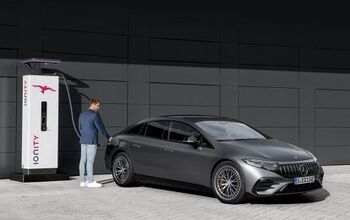



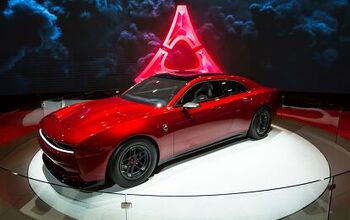



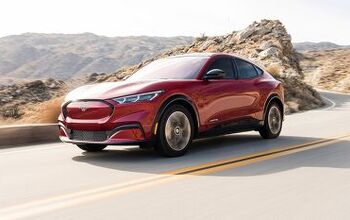


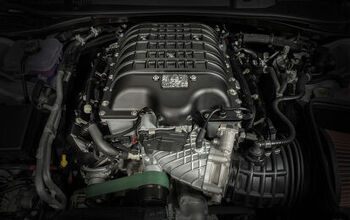

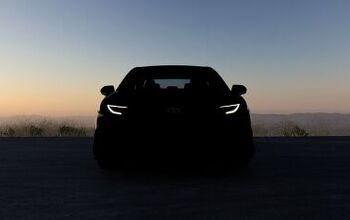
Comments
Join the conversation
I grew up in a small town in the Maritimes. I learned defensive driving and all that jazz. Traffic jams in my hometown were when there was no empty space between two sets of lights. Then I moved to Montreal. All my prior training as a good driver went out the window, and I'm all the better for it. People complain about MTL drivers all the time, but if you are capable of paying attention to your surroundings you really become a much better driver. You have to be aggressive, quick acting and merciless otherwise you'll be (at best) the asshole who holds up downtown traffic, or (at worst) the moron in a now-wrecked car blocking the freeway. This requires concentration, something entirely lacking among most drivers, especially outside big cities. Throw some bumpkin onto the Decarie expressway at peak flow with semis grazing their doors at 130 km/h and see how they fare (actually I see it daily, they are the nitwits who plug up the flow of traffic all the time). I even get pissed off when I drive through Toronto because the people are either negligent or overly conscious of other drivers (stopping to let people pull out of t-junctions in busy downtown traffic - courtesy has a place, but not when it involves holding up commuter traffic in a multi-million pop city) Step one to improving traffic behaviour - rewrite "defensive driving" techniques or toss them out altogether. Step two, ban automatics so people actually pay attention to the task of driving their vehicle. Step three, have final driver training on the streets and freeways of Montreal during peak traffic and rush hour. When I come to power as a benevolent dictator, these will be the first orders to the transport department, right after abolishing speed limits outside of residential areas.
I hate when drivers seem to be afraid to accelerate into traffic (be it merge lane, on-ramps etc). Than once in traffic they creep along causing all traffic behind them to slow up. One should always drive at or faster than the surrounding traffic speed that one is merging into. There is nothing worse than a person driving from a on-ramp or a another lane and I have to hit my brakes because they are driving 20 mph slower than the other fifty cars around them. I myself love speeding up on-ramps and merging into traffic already doing 60-70 mph. I have driven in about 6 different countries and all over the United States. The best drivers adapt to the surrounding traffic they are driving in at that moment.